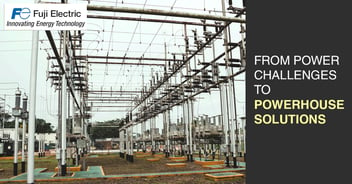The Necessity for a strong connection between Data and Energy
The data center industry is dynamic and driven by innovation. Companies are constantly pressured to cut costs by increasing productivity and saving time. It is also more important than ever to keep the lights on for infrastructure essential for carrying out mission-critical tasks while maximizing energy efficiency.
Data centers are expected to utilize 1,200 or perhaps 3,000 terawatt hours (TWh) of electricity annually by 2025, up from their current use of 200–300 TWh. The industry is faced with both a challenge and an opportunity. If data centers are not built and run sustainably, environmental health may be in danger. Many new technologies have led to more sustainable methodologies due to the pressing need to preserve the environment and make the best use of available resources.
Climate change and digitization demands collide in data centers. New digital infrastructure must be developed quickly to handle the increasing amount of data businesses produce. However, the infrastructure must be as environmentally friendly as possible and long enough to withstand a changing climate.
Definition of the issue
According to research, the cooling of IT equipment uses 40% of the energy in data centers. A data center must maintain a cold environment for critical equipment to perform efficiently.
It is possible to create a greener environment by using less energy to perform the same tasks as before, and energy-efficient solutions are critical in accomplishing this.
Competence of UPS in data centers
Reduced power consumption is the most effective strategy to lessen a data center's adverse environmental and financial effects. The energy wastes produced by the cooling system can be used to power the data center partially. PUE is calculated by dividing the total amount of power entering a data center by the amount used to power the equipment inside.
Data centers can become more energy efficient by closely monitoring temperature, idly running servers, and power storage dynamics.
The most recent uninterruptible power supply (UPS) solutions can help data centers save even more electricity. Data centers can save energy consumption while maintaining dependability by installing high-efficiency UPS systems. In part, improved UPS efficiency is due to advancements in switching technology (insulated-gate bipolar transistors replacing silicon-controlled rectifiers) and controls (digital signal processing replacing analog control)
Reduced footprints and more efficiency
Data centers can save energy consumption while maintaining dependability by installing high-efficiency UPS systems. UPS efficiency has grown due to switching technologies (insulated-gate bipolar transistors replacing silicon-controlled rectifiers) (digital signal processing replacing analog control). The productivity of a business is raised with a high-efficiency UPS., lowered cooling requirements, and a smaller UPS footprint.
With power semiconductors created in-house, Fuji Electric UPS 7000HXi systems may have the most acceptable conversion efficiency in the business. The equipment's dependability and effectiveness are further enhanced by its professional engineers' maintenance and inspections of the UPS and batteries. By cutting down on UPS power loss by 40%, UPS 7000Hxi systems can improve PUE in data centers.
The incredibly effective UPS from Fuji Electric is made to deal with issues like a maximum efficiency of 96.5 percent. A reliable power source that runs in parallel with a three-level dedicated module outfitted with RB-IGBT lowers the total cost of ownership and offers assurance. Fuji Electric's semiconductors provide energy efficiency with our state-of-the-art IGBT technology creating more reliability for application. The Fuji Electric UPS 7000HXi has NPC 3-Level Conversion technology, which offers up to 96.5 percent efficiency and lower operating costs. With modest footprints, the input power factor exceeds 0.99. battery life is ensured by the presence of a DC-DC converter for Li-ion batteries. Without requiring any rear space, up to eight units can be used in tandem with the UPS 7000HXi.
Each watt matters!
Each watt counts in both the economic and environmental senses! One of the biggest energy wasters is often considered UPS systems, which are essential parts of a data center's mission-critical architecture. Organizations should compare the predicted efficiency of various UPS models across all load levels before making a new UPS purchase for a data center. Over the length of the UPS's life, even a 1-percent efficiency improvement over the current design can result in significant cost savings.
 China
China Europe
Europe France
France Hong Kong
Hong Kong Indonesia
Indonesia Japan
Japan Singapore
Singapore Thailand
Thailand USA
USA
